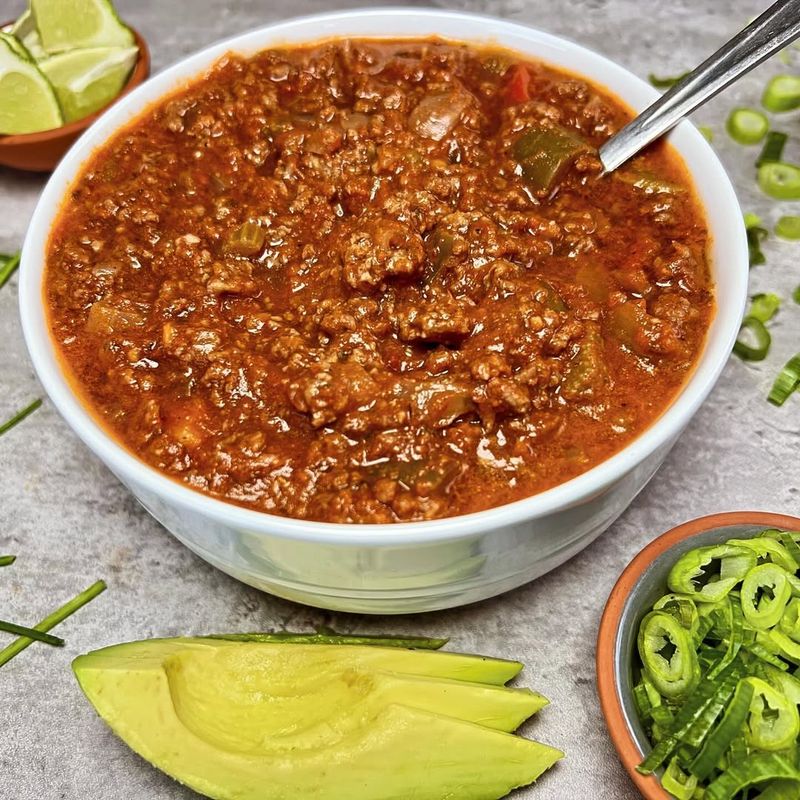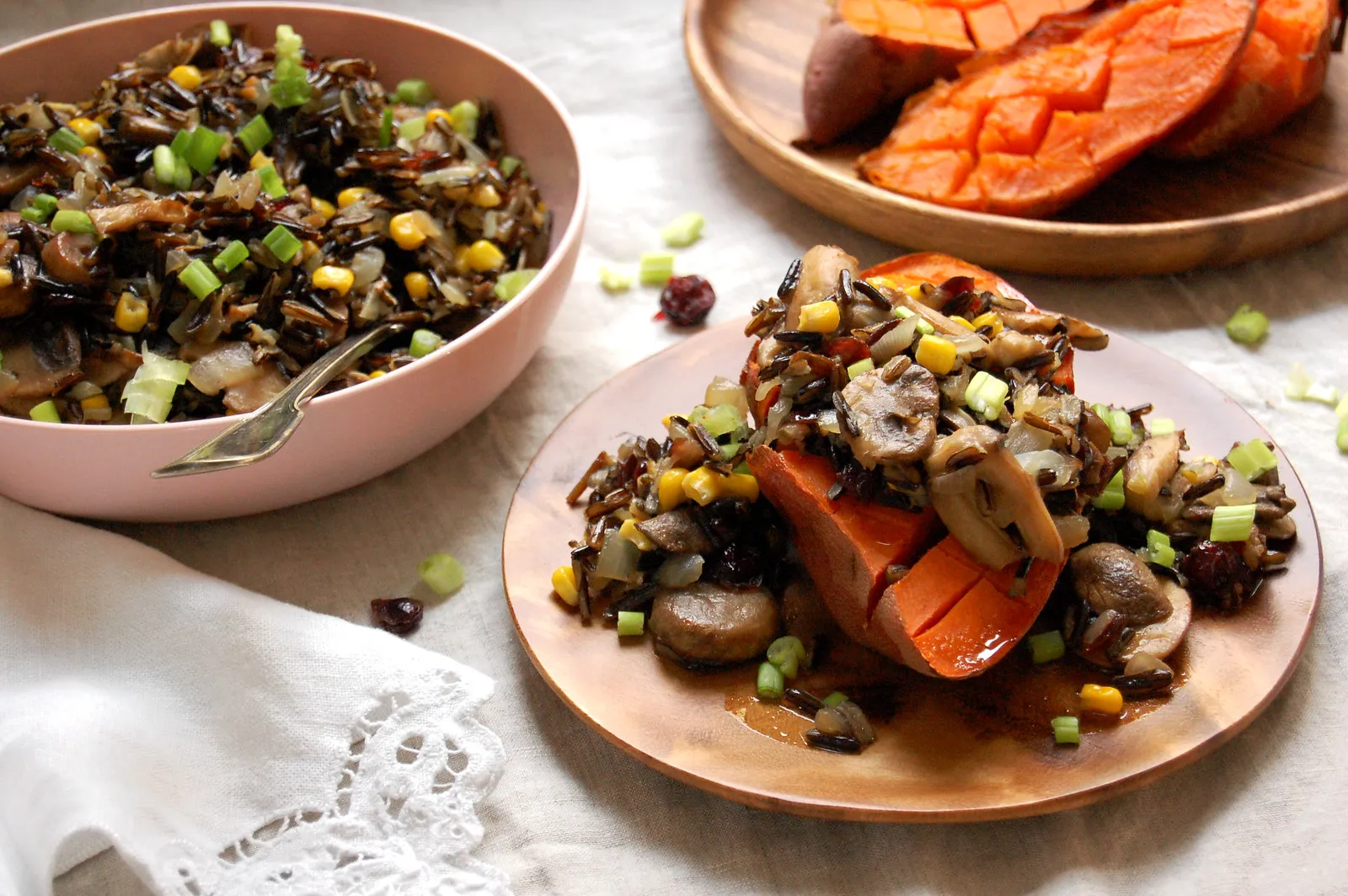
A Taste of the Plains: Authentic Native American Bison and Wild Rice Chili
The scent of simmering spices, the hearty texture of tender bison, and the nutty chew of wild rice – this is more than just a meal; it’s a journey to the heart of North America’s indigenous culinary traditions. Authentic Native American Bison and Wild Rice Chili is a dish that speaks of history, resilience, and the deep connection between people and the land. It’s a testament to the ingenuity of Native peoples who, for millennia, have utilized the bounty of their environment to create nourishing and flavorful sustenance.
This chili, unlike its more common Tex-Mex counterpart, offers a distinct profile. It’s less about overwhelming heat and more about the rich, earthy flavors of its core ingredients, elevated by a thoughtful blend of aromatics and spices. The lean, robust taste of bison provides a depth that beef simply cannot replicate, while wild rice, a grain deeply intertwined with the culture and sustenance of many tribes, adds a unique texture and subtle, nutty sweetness.
A Legacy of the Plains: Bison and Wild Rice

The American Bison (Bison bison) holds an iconic place in the history and ecology of North America. For countless Native American tribes, the bison was the "giver of life." Its meat provided essential protein, its hide offered shelter and clothing, and its bones were fashioned into tools and implements. The spiritual significance of the bison is profound, representing strength, abundance, and a sacred connection to the natural world. The near extinction of the bison in the late 19th century was a devastating blow to Native cultures, and the ongoing efforts to reintroduce and manage bison herds are a crucial part of cultural revitalization and ecological restoration.
Wild rice, often referred to as "manoomin" in Ojibwe, is not technically rice but rather the seed of an aquatic grass that grows in shallow lakes and slow-moving rivers, particularly in the Great Lakes region. For tribes like the Ojibwe, Dakota, and Menominee, wild rice has been a staple food for thousands of years. Harvesting wild rice is a labor-intensive and traditional practice, often involving canoes and specialized tools, and it remains an important cultural and economic activity. Its distinctive flavor and chewy texture make it a prized ingredient, and it pairs beautifully with the richness of bison.
Crafting the Authentic Flavor Profile
The beauty of this chili lies in its simplicity and the quality of its ingredients. While regional variations and personal preferences will always exist, a core set of elements defines an authentic Native American Bison and Wild Rice Chili.
- The Bison: Opting for ground bison is the most accessible and practical choice. Its leanness means it benefits from careful cooking to retain moisture, and its naturally rich flavor is the star. If ground bison is unavailable, a good quality bison stew meat, finely diced, can also work, though it will require longer simmering.
- The Wild Rice: Uncooked wild rice needs to be pre-cooked. It’s essential to cook it separately to achieve the desired chewy texture, as it will continue to absorb liquid in the chili and can become mushy if cooked entirely within the stew.
- The Aromatics: Onions, garlic, and bell peppers form the foundational flavor base. The choice of bell pepper can lean towards green for a slightly more vegetal note, or red for a touch of sweetness.
- The Spices: This is where nuance comes into play. While chili powder is often present, the focus is on a more balanced blend. Cumin provides warmth and earthiness, smoked paprika adds a subtle smoky depth without overpowering, and oregano lends a herbaceous counterpoint. A touch of cayenne pepper or red pepper flakes can be added for a gentle warmth, but the intention is not to create a fiery dish.
- The Liquid Base: A good quality beef or bison broth is crucial for building flavor. Tomatoes, in the form of diced tomatoes and tomato paste, add acidity and body.
- The "Thickeners" (Optional but Traditional): Some traditional recipes might incorporate finely ground cornmeal or even hominy for added texture and to help thicken the chili naturally.

A Deeper Connection: More Than Just Ingredients
Preparing this chili is an opportunity to connect with a rich culinary heritage. It’s a chance to appreciate the resourcefulness and wisdom of indigenous peoples who understood how to nourish themselves and their communities using the gifts of the land. As you chop the vegetables, sauté the bison, and let the spices meld, consider the journey of these ingredients – from the vast plains where bison roamed freely, to the serene lakes where wild rice grew.
The act of cooking and sharing this chili can be a form of cultural appreciation and learning. It’s a reminder that food is not just fuel, but a vessel of history, tradition, and identity.
Serving Suggestions: Embracing Tradition
Authentic Native American Bison and Wild Rice Chili is a meal in itself, hearty and satisfying. However, it can be beautifully complemented by traditional accompaniments that further enhance the experience:
- Cornbread: A slightly sweet and crumbly cornbread is a classic pairing, offering a delightful contrast in texture and flavor.
- A dollop of sour cream or plain yogurt: Adds a cooling creaminess to balance the richness.
- Fresh cilantro or parsley: For a burst of fresh herbaceousness.
- A sprinkle of toasted pumpkin seeds (pepitas): Adds an extra layer of nutty crunch and a nod to another important indigenous food.
- A side of sautéed greens: Such as dandelion greens or wild spinach, can add a fresh, slightly bitter element.
A Culinary Bridge
In a world increasingly focused on fast food and globalized flavors, dishes like Authentic Native American Bison and Wild Rice Chili offer a vital connection to our roots and to the diverse culinary tapestry of our continent. It’s a dish that nourishes the body and the soul, carrying with it stories of the past and hopes for the future. So, gather your ingredients, embrace the process, and savor a true taste of the American plains.
Authentic Native American Bison and Wild Rice Chili Recipe
This recipe aims to capture the essence of a traditional Native American Bison and Wild Rice Chili, focusing on rich, earthy flavors and satisfying textures. It’s designed to be hearty and flavorful without being overly spicy.
Yields: 6-8 servings
Prep time: 30 minutes
Cook time: 1 hour 30 minutes to 2 hours
Ingredients:
For the Wild Rice:
- 1 cup wild rice, rinsed
- 3 cups water or unsalted vegetable broth
For the Chili:
- 2 tablespoons olive oil or rendered bison fat (if available)
- 1.5 pounds ground bison
- 1 large yellow onion, finely chopped
- 2 cloves garlic, minced
- 1 green bell pepper, seeded and chopped
- 1 red bell pepper, seeded and chopped
- 1-2 tablespoons chili powder (adjust to your preference, aim for a mild blend)
- 1 tablespoon ground cumin
- 1 teaspoon smoked paprika
- 1/2 teaspoon dried oregano
- 1/4 teaspoon cayenne pepper or red pepper flakes (optional, for a touch of heat)
- 1 teaspoon sea salt, or to taste
- 1/2 teaspoon freshly ground black pepper, or to taste
- 1 (28 ounce) can diced tomatoes, undrained
- 1 (6 ounce) can tomato paste
- 4 cups beef broth or bison broth (low sodium preferred)
- 1 (15 ounce) can kidney beans or pinto beans, rinsed and drained (optional, for added heartiness)
- 1/4 cup masa harina (fine corn flour) or all-purpose flour (optional, for thickening)
- 1/4 cup cold water (if using masa harina or flour)
Optional Garnishes:
- Sour cream or plain Greek yogurt
- Fresh chopped cilantro
- Chopped green onions
- Toasted pumpkin seeds (pepitas)
- Cornbread
Instructions:
1. Cook the Wild Rice:
- In a medium saucepan, combine the rinsed wild rice and water or broth.
- Bring to a boil over medium-high heat, then reduce heat to low, cover, and simmer for 45-50 minutes, or until the rice is tender and has opened up.
- Drain any excess liquid and set the cooked wild rice aside.
2. Brown the Bison:
- Heat the olive oil or bison fat in a large, heavy-bottomed pot or Dutch oven over medium-high heat.
- Add the ground bison and cook, breaking it up with a spoon, until browned.
- Drain off any excess grease, leaving a small amount in the pot for flavor.
3. Sauté the Aromatics:
- Add the chopped onion, minced garlic, and chopped green and red bell peppers to the pot with the bison.
- Cook, stirring occasionally, until the vegetables have softened, about 8-10 minutes.
4. Add Spices and Seasonings:
- Stir in the chili powder, cumin, smoked paprika, oregano, cayenne pepper (if using), salt, and black pepper.
- Cook for 1-2 minutes, stirring constantly, until the spices are fragrant. This helps to bloom the spices and deepen their flavor.
5. Build the Chili Base:
- Add the diced tomatoes (undrained) and tomato paste to the pot. Stir well to combine with the bison and vegetables.
- Pour in the beef or bison broth and bring the mixture to a simmer.
6. Simmer the Chili:
- Reduce the heat to low, cover the pot, and let the chili simmer gently for at least 1 hour, stirring occasionally. This allows the flavors to meld and develop. The longer it simmers, the richer the flavor will become.
7. Add Wild Rice and Beans (Optional):
- During the last 15-20 minutes of simmering, stir in the cooked wild rice and the rinsed and drained kidney or pinto beans (if using). Continue to simmer until everything is heated through.
8. Thicken the Chili (Optional):
- If you prefer a thicker chili, whisk together the masa harina (or flour) and cold water in a small bowl until smooth.
- Slowly stir this slurry into the simmering chili. Continue to cook, stirring frequently, for another 5-10 minutes, or until the chili has thickened to your desired consistency.
9. Adjust Seasoning:
- Taste the chili and adjust salt and pepper as needed.
10. Serve:
- Ladle the hot chili into bowls.
- Garnish with your favorite toppings such as sour cream, fresh cilantro, green onions, or toasted pumpkin seeds.
- Serve with warm cornbread for a complete and authentic meal.
Enjoy this hearty and flavorful journey into Native American culinary traditions!


